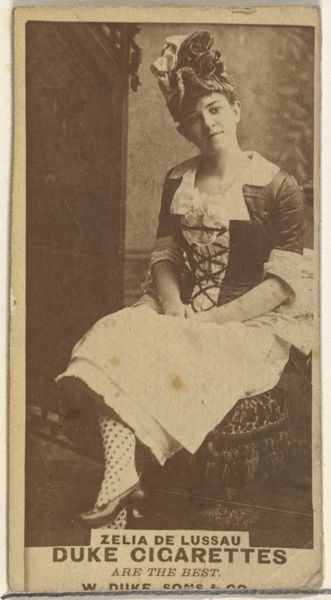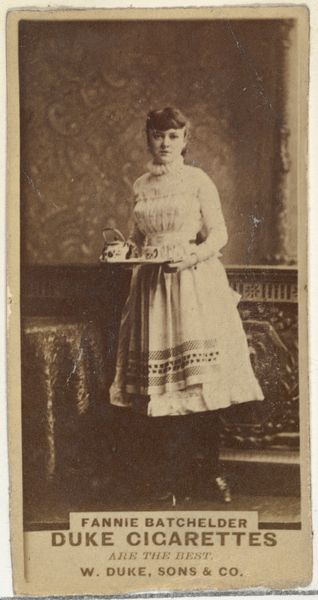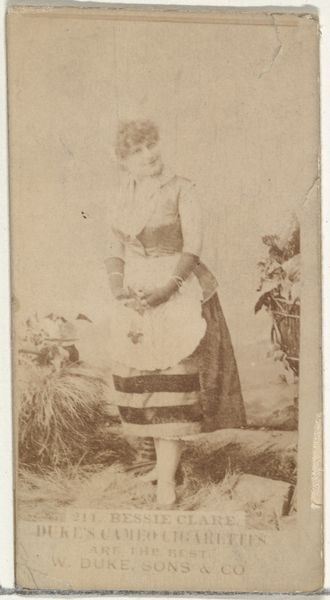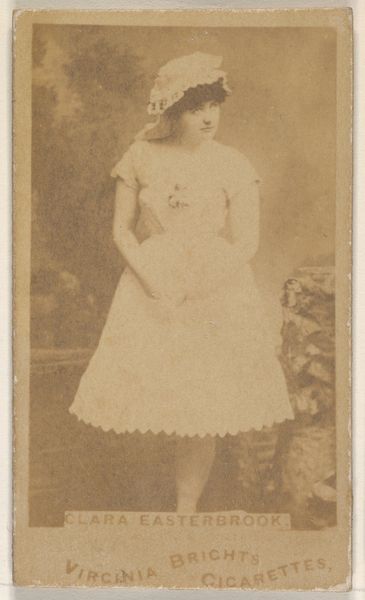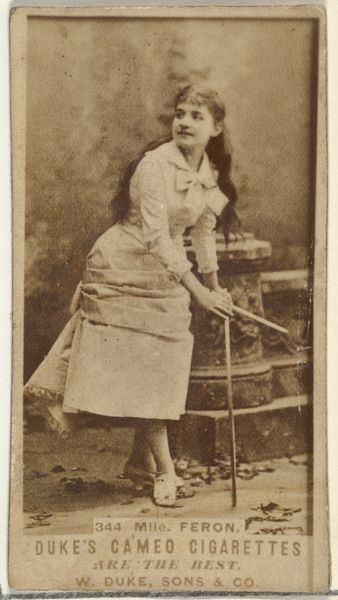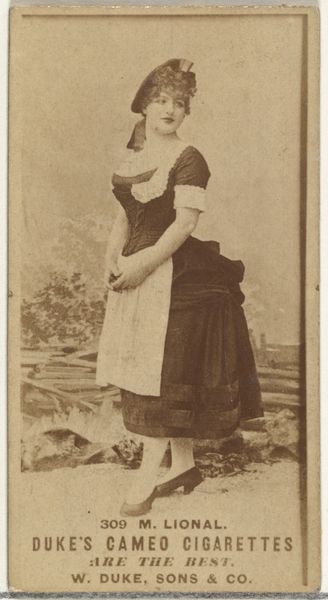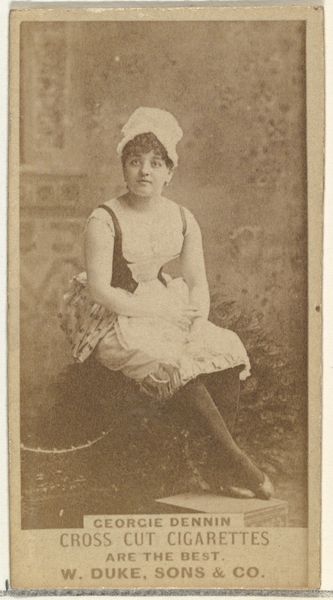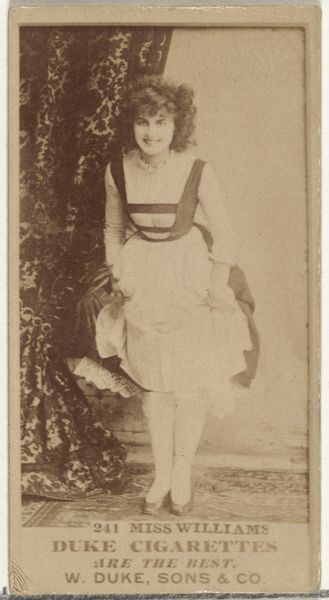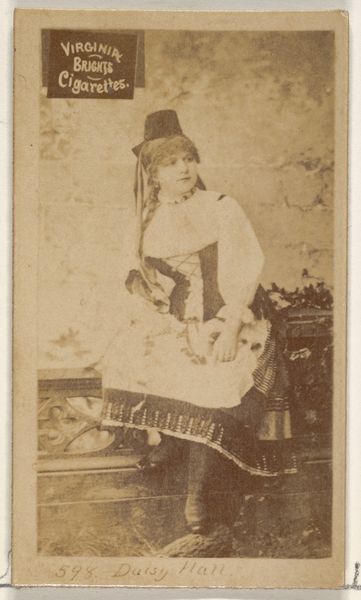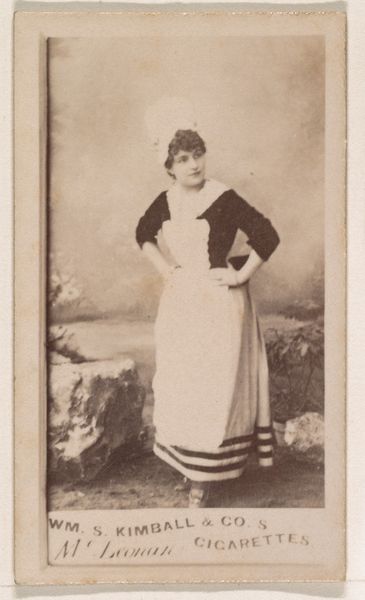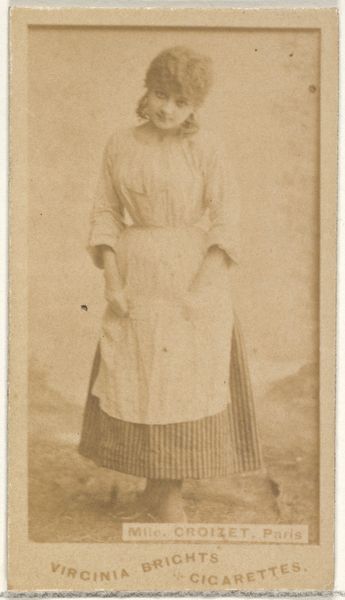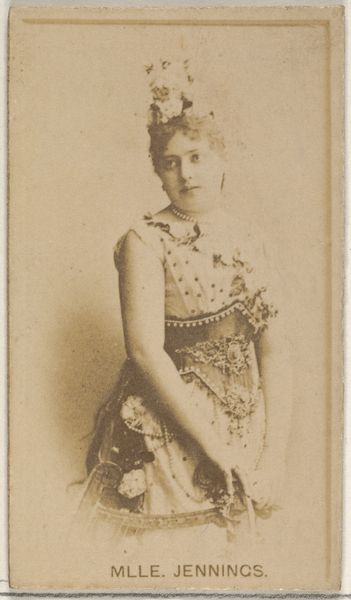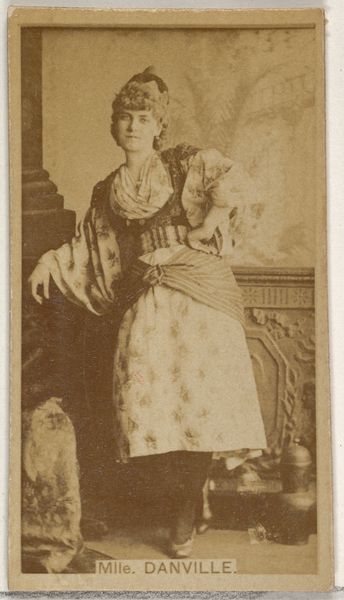
Fannie Batchelder, from the Actors and Actresses series (N145-7) issued by Duke Sons & Co. to promote Duke Cigarettes 1880s
0:00
0:00
drawing, print, photography, collotype
#
portrait
#
drawing
#
16_19th-century
#
pictorialism
# print
#
photography
#
collotype
#
19th century
Dimensions: Sheet: 2 11/16 × 1 3/8 in. (6.8 × 3.5 cm)
Copyright: Public Domain
Curator: This is "Fannie Batchelder," a collotype print from the Actors and Actresses series, dating to the 1880s, published by W. Duke, Sons & Co. to promote Duke Cigarettes. Editor: Immediately striking is the sepia tone and small scale; it gives the image a wonderfully aged, tactile feel. The subject, Fannie, looks rather ordinary, though there's an interesting formality in her pose. Curator: Yes, the composition is intriguing. The figure of Fannie is centered, seated demurely with her hands clasped. The background features what appears to be an ornately decorated bench or wall, yet the image's depth of field is so shallow it seems almost flattened. Semiotically, it’s a study in contrasting textures. Editor: Absolutely. What interests me is that it's printed as a promotional item, and its material existence is deeply tied to commodity culture of the 19th century. These weren't meant for gallery walls, but to be collected from cigarette packs, highlighting the interplay of celebrity and product endorsement. The paper stock probably was quite cheap, which emphasizes how labor and materials were cheapened for mass appeal. Curator: The portrait presents an idealized version of the sitter but that can only exist due to those constraints and this specific media. Fannie’s placement against a slightly blurred background brings her into sharp focus and directs the eye straight to her features; her face conveys innocence and charm. And as this is pre-photoshop era, the effect must rely on camera tricks. Editor: True, but I keep coming back to the context of its production. We see Fannie framed and packaged as an object of desire within the economy of tobacco consumption. These types of cigarette cards popularized figures from theatre and other performances to promote cigarette brands. This piece showcases the means through which mass production elevated seemingly commonplace figures and the role that materials play. Curator: It seems our differing lenses lead us to equally compelling interpretations. The composition provides the language, and the media acts as distribution, like a language broadcast on radio waves. It's through that structural lens we appreciate both context and object. Editor: Precisely. By examining how and why art is made and what purpose materials provide, the piece reflects broader networks of labor and how it shapes our appreciation of art and industry as a whole.
Comments
No comments
Be the first to comment and join the conversation on the ultimate creative platform.
